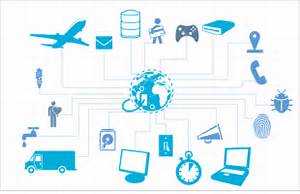Meeting the Internet of Medical Things’ Demands for Networking
November 22, 2017
Source: healthtechmagazine.net
 618
618

Hospitals, clinics, long-term care facilities and many other types of healthcare organizations are looking to the Internet of Things to enable remote patient monitoring and care, track the location and status of critical assets and to analyze patient health and staff performance data. Yet strong safeguards, including compliance with medical regulations, must be established before the IoT can become a widely accepted healthcare technology.
In healthcare, network security is literally a life-or-death matter.
“Medical IoT devices should always be operated in a separated network segment,” advises Wieland Alge, a Barracuda Networks vice president.
IoT Networks Increase Complexity for Medical Networks
Comparing an IoT network to a traditional business network is like comparing the Interstate Highway System to a community bike trail.
The days when networks were simply expected to provide basic, reliable and secure connectivity are winding down. The rapid emergence of IoT is complicating life for IT departments.
“The much, much larger number of smart devices being connected to networks means more bandwidth consumption, additional storage requirements and additional security concerns,” says Brent Hodges, industrial and telco IoT lead for Dell.
Massive IoT deployments supported by sophisticated networks will become increasingly common over the next several years in the healthcare field, challenging organizations to operate and maintain efficient, reliable and cost-effective infrastructures.
Today’s healthcare IT leaders are being charged with the responsibility of designing and deploying a growing number of IoT initiatives. They are also expected to provide relevant data and insights about their projects’ success or failure.
Yet many healthcare organizations embark on IoT ventures with the wrong outlook. The IoT makes smart ideas a reality, says Alge, noting that many smart ideas make common activities better or less expensive.
“If you do not have such a natural demand, either think harder or just do not build an IoT,” he says. “The IoT is there to connect smart things and collect and process useful information, not to create a network of useless data.”
Building Out IoT Infrastructure Requirements
A flexible and scalable network infrastructure is essential to ensure efficient, reliable and secure IoT data feeds. Choosing the right network protocols and topologies requires consideration of many different factors, including application needs, coverage requirements, device type and location, power consumption and budget. Each of these factors can contribute to a different network decision.
“High-speed connections are essential for lowest latency or large data volume use cases and where low power is not essential,” observes Hodges. “Lower-speed connections work best in use cases where latency is not critical, where low-power sensors are involved and where there are generally lower data volumes.”
Among IoT wireless technologies, Wi-Fi offers advantages in capacity, coverage and ease of use. In remote and wide-area locations where deploying Wi-Fi doesn’t make sense, broadband cellular connectivity — either 3G or 4G LTE — provides a practical alternative. Cellular’s benefits include global access, high bandwidth, scalability and diversity. In places where both Wi-Fi and cellular can’t be used, satellite services are available to supply connectivity to virtually any location on earth.
New low-power wide area networks (LWPANs) are also becoming available as alternative wide area network technologies. LWPAN technologies can provide significant benefits, including lower total cost of ownership, extended coverage and longer device battery life.
While IoT networks are highly standardized, many medical devices are not.
Moreover, devices as disparate as mobile phones, environmental sensors, security cameras and motion and pressure detectors often impose their own network requirements.
“These devices may not like being on a regular network,” says Greg Schulz, founder and senior adviser with Server and StorageIO, a technology consulting firm. “Even though they can broadly speak out over the internet, they might have to be on a private network for security or for other reasons.” Schulz says it’s important to stay aware of device network requirements during project planning.
Ensuring Medical Network Security and Management
Integrated security is necessary for keeping healthcare IoT data out of the hands of unauthorized parties. Network security devices in general provide a great deal of resilience, Alge says.
“First, the vulnerability surface disappears,” he notes. “Since all IoT devices go into stealth mode [when not sending data], nobody can harvest them; firewalls control the connectivity in a traditional secure manner.”
Yet despite a growing need to lock down IoT networks, many security tools remain in the formative stage.
“Many IoT devices ship with only basic security settings,” Alge says. “In more industrial markets, the task becomes even harder because many interfaces and control systems come from a past era and cannot be properly patched or updated with new security protocols.”
With IoT, network management assumes a new dimension, forcing IT staff to monitor and fine-tune things they probably never even thought of before.
“Network management allows you to see where things are, what they’re plugged into,” says Trent Fierro, software and security solutions marketing director for Aruba Networks. “It also lets you pinpoint where to go if something is not working correctly.”
Working with a trusted partner is the best way to develop a management platform that meets an organization’s unique IoT needs. IoT management also has a direct effect on network security, giving trusted parties access to devices and stored data and keeping the bad guys out.
“Call it ‘security management’ — getting the privileges to whom they’re supposed to,” he says.
By DduRead more on
- Things to Know before Buying Newborn Baby Incubators March 31, 2022
- Highly Resistant Food Poisoning Bug Responds to Antibiotics September 6, 2018
- Smartphone Based Diagnosis to Identify Mosquitoes Transmitting Infection September 5, 2018
- 3 Natural Plant Extracts Manufacturers on Drugdu.com September 4, 2018
- Shenzhen Chuanggan – Health Assessment Facility Supplier September 4, 2018
your submission has already been received.
OK
Subscribe
Please enter a valid Email address!
Submit
The most relevant industry news & insight will be sent to you every two weeks.



